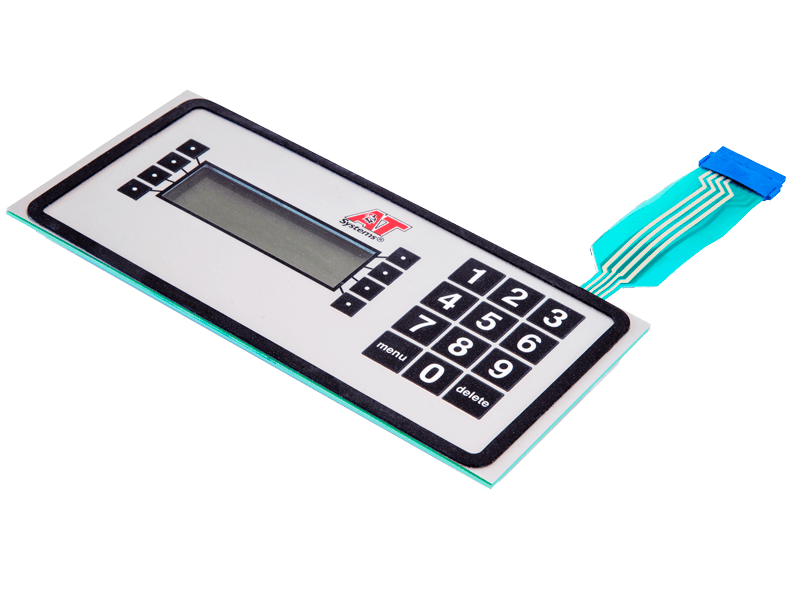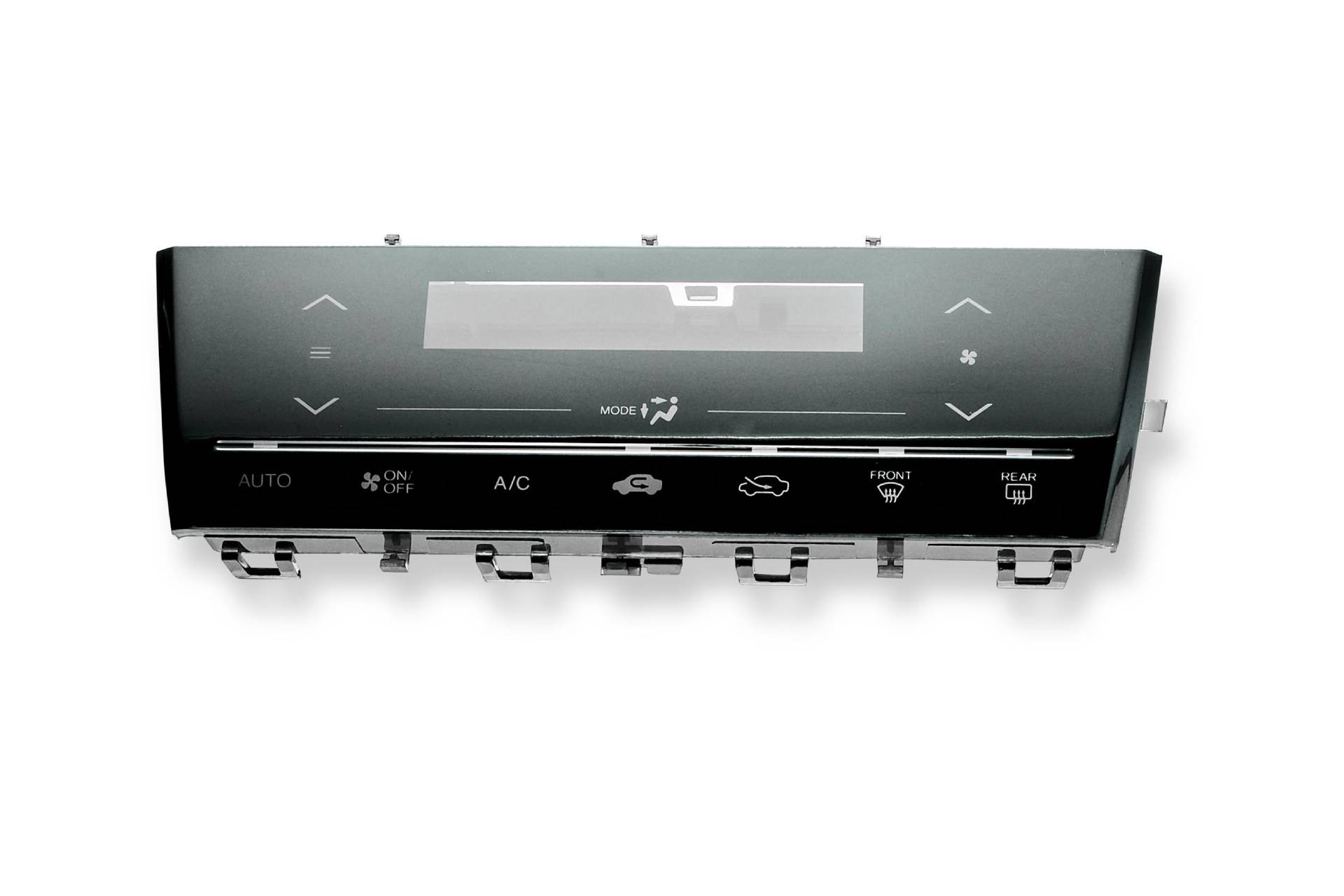It’s important to assess the capabilities of any membrane switch manufacturer before starting a project.
It’s important to assess the capabilities of any membrane switch manufacturer before starting a project.
Blog Article
What to Seek When Selecting a Membrane Change for Your Project
When you're picking a membrane switch for your task, numerous essential elements come right into play. You'll require to consider the products, style, and just how well it straightens with your brand. Toughness and use are crucial, however so is the credibility of the supplier. Comprehending these elements can help you make a notified decision-- one that balances high quality and cost effectively. Allow's discover what you must think about to ensure your choice fulfills all your job requires.
Understanding Membrane Layer Switch Over Elements
When you dive right into the world of membrane switches, it's important to grasp the key parts that make them work. Beneath that, the spacer layer warranties there's enough distance between the circuit and the overlay, enabling the button to trigger without continuous pressure.
The circuit layer, frequently made from published conductive inks, produces the electrical pathways. When you push a button, the circuit shuts, sending out a signal to the device. Understanding how these layers function together helps you select a membrane layer button that's reliable and fits your task requirements. Pay very close attention to the density and product of each layer, as these elements influence sturdiness and capability in different atmospheres.
Material Option and Its Effect
Choosing the best products for your membrane button can substantially impact its performance and longevity. The choice of substratum, usually polyester or polycarbonate, influences toughness and adaptability. Polyester is much more abrasion-resistant, while polycarbonate offers better clearness and toughness.
Following, take into consideration the adhesive. It requires to hold up against ecological factors like dampness and temperature level changes. A solid sticky guarantees that your membrane layer switch remains intact with time.
Do not ignore the graphic overlay. The printing technique utilized, whether silkscreen or electronic, affects the switch's aesthetic appeals and durability. High-quality inks will stand up to fading and scraping, preserving a specialist look.
Last but not least, consider ecological problems. If your tool will certainly be exposed to extreme chemicals or severe temperatures, choose materials developed to sustain these difficulties. Your choices in materials will eventually establish the switch's integrity and customer fulfillment.
Design Considerations for User Experience
Choosing the right materials lays the foundation for an effective membrane button, but the layout likewise plays a significant role in customer experience. You'll desire to assess exactly how the design affects usability (membrane switch manufacturer). Maintain switches and icons instinctive and well-spaced, making it simple for individuals to navigate without complication

Color and contrast are additionally vital; warranty that your design is aesthetically appealing but still functional. High comparison assists users easily recognize switches, particularly in low-light conditions.
Finally, assess the overall aesthetic. A smooth and modern-day style can boost customer understanding and make your item much more appealing. Balancing performance with an interesting layout will bring about a far better customer experience and inevitably, a much more successful item.

Environmental Factors and Durability
When selecting a membrane switch, you need to take into consideration just how it'll do in numerous settings. Elements like temperature level resistance, dampness and chemical exposure, and mechanical wear can greatly impact its sturdiness. Recognizing these aspects will assist you select a button that withstands your particular conditions.
Temperature Level Resistance Demands
As environmental conditions can vary commonly, understanding temperature resistance is important for making sure the sturdiness of your membrane layer switch. You require to examine the temperature level range in which your device will run. Heats can trigger products to break down, resulting in failure, while low temperature levels may make components breakable and prone to fracturing. See to it to examine the specifications of the materials utilized in the button, like the sticky and overlay, as they straight influence performance. It's additionally smart to consider potential temperature changes and their results on the button's dependability. By choosing a membrane switch with appropriate temperature level resistance, you'll enhance its lifespan and preserve functionality in tough environments. Pick wisely to avoid expensive replacements down the line.

Wetness and Chemical Direct Exposure
Moisture and chemical exposure can greatly influence the efficiency and longevity of your membrane switch, so it's vital to understand the environment in which it will certainly be utilized. If your project involves high moisture or direct exposure to liquids, try to find protective finishes and sealants that can improve resistance to moisture. Furthermore, take into consideration the kinds of chemicals your button might encounter. Specific products can weaken when exposed to solvents, oils, or extreme cleansers. Choosing the appropriate products, like polycarbonate or polyester, can aid stand up to these components. Always get in touch with the maker's specs for chemical compatibility to assure your membrane layer switch keeps its functionality gradually. By prioritizing moisture and chemical resistance, you can improve the durability of your button in tough settings.
Mechanical Deterioration
While you might focus on features like aesthetics and performance in your membrane switch, mechanical deterioration can substantially affect its efficiency gradually. Take into consideration just how typically the button will be made use of and the setting it'll be in. Constant pressing can lead to deterioration of materials, triggering problems like responsive responses loss or also switch failing. Look for models with robust designs, such basics as those with protective overlays that withstand scratches and use. Furthermore, check for specifications on cycle life, which indicates the amount of presses the switch can deal with before revealing indications of wear. Picking a long lasting switch warranties durability and integrity, avoiding costly substitutes and downtime in your task. Constantly consider resilience alongside aesthetics and capability for peak performance.
Personalization Options for Branding
When it involves branding your membrane button, personalization choices are crucial. You can choose design aspects and shades that reflect your brand, together with particular logo design positioning and size to improve visibility. Additionally, picking the best products and structures can boost the total feel and look, making your item attract attention.
Style Aspects and Colors
A large variety of layout elements and shades can make your membrane layer button not just practical but additionally visually appealing, enhancing your brand identification. When choosing shades, think concerning your brand name's palette; they need to reverberate with your audience and stimulate the best feelings. You can additionally explore various coatings like matte or glossy to produce various visual effects. Do not fail to remember about textures; including a tactile aspect can improve customer experience and make your button stand apart. Think about including custom-made graphics or patterns that line up with your brand message. By attentively picking design components and shades, you not only develop a product that looks great however likewise strengthens your branding continually and successfully.
Logo Design Positioning and Size
After settling your style elements and colors, the next step is to concentrate on logo design placement and size. Your logo is a crucial aspect of your branding, so you'll desire it to attract attention without overwhelming various other design components. Reflect on where your logo will certainly be most visible and impactful; typical positionings include the leading or center of the button.
Think regarding the dimension as well-- too large and it could overshadow practical elements, also little and it could obtain shed. Objective for a balance that enables your logo to be quickly recognizable while maintaining the overall visual appeals. Don't neglect to ponder exactly how the logo design straightens with individual communication. This attention to detail will certainly enhance both performance and brand name identification in your task.
Material and Appearance Choices
Selecting the ideal materials and textures for your membrane layer button can greatly improve both its performance and aesthetic charm. You'll wish to review choices like polyester or polycarbonate, as they provide longevity and resistance to put on. The structure of the surface area likewise plays a necessary role; smooth surfaces supply a sleek appearance, while distinctive surfaces can boost grasp and responsive comments.
Personalizing the materials and textures allows you to mirror your brand name identity effectively. As an example, you could choose a matte finish to communicate pop over to these guys elegance or a glossy seek a modern touch - membrane switch manufacturer. Do not ignore color choices, as dynamic colors can make your button stand out, while low-key tones can produce a more classy look
Expense vs. Quality: Discovering the Right Equilibrium
When you're handling the options for membrane switches, stabilizing price and high quality can feel overwhelming. A lower-cost button may conserve you money upfront, however if it endangers capability, you might deal with greater substitute prices later.
Search for makers that provide a great mix of affordability and high standards. Research study their track record and customer reviews to evaluate reliability. In some cases, spending a little bit extra in top quality products can save you from future migraines.
Likewise, think about the lasting efficiency and guarantee alternatives. A a little extra expensive button with a strong warranty can confirm to be a smarter financial investment. Eventually, it has to do with finding that wonderful place where you meet your budget plan while assuring your task's success.
Checking and Top Quality Assurance Protocols
While you may discover the ideal membrane button design, assuring its quality with rigorous testing procedures is necessary for lasting success. Beginning by verifying that the supplier adheres to sector criteria, such as IPC/WHMA-A -620, to ensure a trustworthy item. membrane switch manufacturer. You'll wish to check for detailed screening techniques, including environmental, mechanical, and electrical assessments
Make sure the switches go through resilience screening, replicating real-world use to identify any type of potential failings. Take notice of the manufacturer's quality control procedure, which must consist of routine evaluations and audits.

Don't forget to request samples and conduct your own tests to verify compatibility with your job. Take into consideration just how frequently the supplier updates their methods; innovation in testing can lead to improved quality. By focusing on these testing and high quality guarantee protocols, you'll enhance the likelihood of an effective and sturdy membrane button for your application.
Regularly Asked Concerns
For how long Does a Membrane Layer Switch Over Typically Last?
A membrane layer switch generally lasts anywhere from 1 to 10 million cycles, depending upon use and environmental aspects. You'll desire to take right into account your details needs to guarantee it meets your durability demands effectively.
Can Membrane Layer Switches Over Be Repaired if Damaged?
Yes, you can sometimes repair membrane buttons if they're harmed, but it frequently relies on the level of the damage. Minor issues could be reparable, while more significant damages typically needs substitute for appropriate capability.
What Are the Usual Applications for Membrane Switches?
Membrane switches are generally used in appliances, medical tools, and vehicle controls. You'll discover them in customer electronics, industrial tools, and even gaming consoles. Their adaptability makes them ideal for different interface and settings.
Exist Specific Qualifications for Membrane Layer Buttons?
Yes, there are specific certifications for membrane buttons. Look for UL, CE, and RoHS accreditations to ensure security and conformity. These accreditations suggest the switch meets sector standards for high page quality and environmental security.
Exactly how Do I Ensure Appropriate Setup of a Membrane Switch Over?
To ensure appropriate installment of a membrane layer switch, clean the surface area extensively, align it very carefully, and use even pressure. Comply with manufacturer guidelines for glue curing time to maximize toughness and capability.
Conclusion
When selecting a membrane button for your job, keep these crucial aspects in mind: prioritize sturdy products, emphasis on straightforward layout, and consider personalization for your brand. By meticulously assessing these facets, you'll ensure your membrane layer button not only satisfies your project needs however also boosts user experience and shows your brand name identity properly.
Report this page